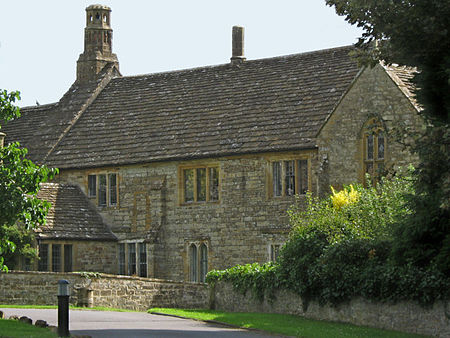Abbey Farm House, Yeovil
Buildings and structures completed in 1420Buildings and structures in YeovilGrade I listed buildings in South SomersetGrade I listed houses in SomersetHamstone buildings ... and 1 more
Houses completed in the 15th century

The Abbey Farm House in Yeovil, Somerset, England was built around 1420 and has been designated as a Grade I listed building.The Ham stone farmhouse was built by John Stourton (died 1438), also known as 'Jenkyn' Stourton. As part of the manor of Preston Plucknett it was originally known as Preston Great Farm, and has always been in lay-ownership. The addition of "abbey" only occurred in the 19th century for reasons unknown.It is closely associated with the Abbey Barn which is also Grade I listed.
Excerpt from the Wikipedia article Abbey Farm House, Yeovil (License: CC BY-SA 3.0, Authors, Images).Abbey Farm House, Yeovil
Monks Dale,
Geographical coordinates (GPS) Address Phone number Website Nearby Places Show on map
Geographical coordinates (GPS)
| Latitude | Longitude |
|---|---|
| N 50.944722222222 ° | E -2.6555555555556 ° |
Address
Preston School Academy
Monks Dale
BA21 3JD , Preston Plucknett
England, United Kingdom
Open on Google Maps



